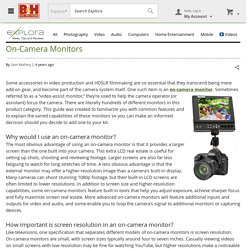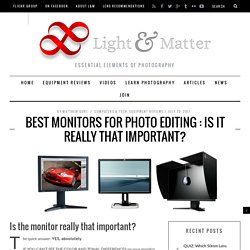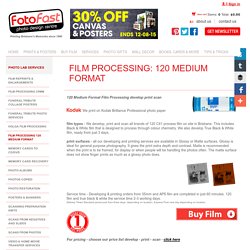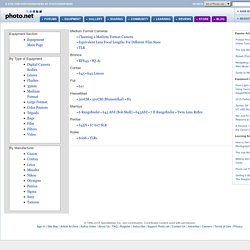

The right image sizes for websites. Posted in: Web design stuff on Tuesday, 28 August 2012 I'm writing this following a phone call from one of our clients about their website.

They didn't really understand the problem they'd created and it's safe to assume that a lot of other people don't either. The problem in question was making a new page for their website that took a full two minutes to load, even on our reasonably fast broadband connection... The page was a mixture of text and some product photographs that had been carefully (and quite well) taken the day before - 26 images to be precise - each one uploaded to the website in full, straight off the camera resolution and then made the right size in the website's editing pages. Image sizes. As web developers, we understand how digital images work because we need to, but most people don't. If the page has maybe one large image, it shouldn't be too noticable - start to do the same with five, ten or more images and things are going to get very slow... The right way to do it. Pentax 645D Digital SLR Camera (Body Only) 17971 B&H Photo Video.
If you're serious about getting better image quality in your photos, the Pentax 645D Digital SLR Camera (Body Only) can move you pretty far along that road: with a format similar to the film 645 system (44 x 33mm), this camera delivers a stunning 40MP of resolution in a package not much larger than top-of-the-line DSLRs (6.1 x 4.6 x 4.7"/15.5 x 11.68 x 11.93 cm and 49 oz/1389 g).

For mobile professionals and laptop power-users, the current selection of portable laptop monitor options are often lacking in resolution, durability, or both.

Engineers, creative professionals, sales representatives, and military or government customers often have to make compromises if they need multiple monitors for extending their mobile workspace or giving memorable product demonstrations. On-Camera Monitors. Some accessories in video production and HDSLR filmmaking are so essential that they transcend being mere add-on gear, and become part of the camera system itself.

One such item is an on-camera monitor. Sometimes referred to as a “video-assist monitor,” they’re used to help the camera operator (or assistant) focus the camera. There are literally hundreds of different monitors in this product category. This guide was created to familiarize you with common features and to explain the varied capabilities of these monitors so you can make an informed decision should you decide to add one to your kit. Best Monitors for Photo Editing : Is it REALLY that important?
Is the monitor really that important?

The quick answer: YES, absolutely. IF YOU CAN’T SEE THE COLOR AND TONAL DIFFERENCES on your monitor, then you can’t make good post-processing decisions and adjustments to your digital negatives. It’s that simple. You can’t adjust your curves to give your print smooth tonal transitions or to distinguish subtle shadow detail if you can’t see those transitions and details to begin with. In order to make optimal adjustments to your digital negatives, you must be able to see as much of your color gamut as possible and the color must be accurate and reliable.
Monitor Technology : IPS vs. TN stands for Twisted Nematic, which is by far the most popular and wide-spread screen technology. More importantly for photographers, though, is that TN monitors use 6-bit color technology, and therefore can’t display the full 24-bit color range (16.7 million colors) that video cards can produce (and that the monitor manufacturers usually claim they can produce).
Film Processing 120 Medium Format. 120 Medium Format Film Processing develop print scan We print on Kodak Brilliance Professional photo paper film types - We develop, print and scan all brands of 120 C41 process film on site in Brisbane.

This includes Black & White film that is designed to process through colour chemistry. We also develop True Black & White film, ready from just 3 days. 120 Medium Format - Film Developing, Scan & Prints » Lomography. Medium Format resources from Photo.net. A Site for Photographers by Photographers Popular Articles: Portrait Photography - Part II (Video Tutorial)The July Monthly ProjectSplash PhotographyNavigating Lightroom: The Web Mode (Video Tutorial)Guide to Nikon TTL Flashes Equipment Articles: From Light to Ink: An Exhibit Using Canon's imagePROGRAF printers2015 Father's Day Gift GuideTamron SP 15-30mm f/2.8 Di VC USD ReviewNot Just for Extreme Sports: 5 Reasons to Own a GoProA Second, Hands-On, Look at the Canon EOS 5DS Learning Articles: How to Get the Most Out of a Photography WorkshopThe July Monthly ProjectMaking Sense of Memory CardsPhoto.net Prints for Sale!

Getting It Right in the Camera: The Imagination Game, Part 3 Equipment Section Equipment Main Page By Type of Equipment By Manufacturer. Equipment Rental - L & P Digital Photographic. No matter what reason you have for renting over buying, our extraordinary selection of equipment, great prices, and helpful staff will meet the rental needs of your next shoot.

We have a wide range of professional gear available for hire including; Medium format cameras, DSLR cameras, Compact, Studio & Battery Flash, Panoramic cameras, Tripods, Light Meters, Tungsten Lighting, Stands, Audio Visual. Some of the brands available; Phase One, Profoto, Mamiya, Sekonic, Pocketwizard, Nikon, Canon, Mamiya, Metz and Induro. Follow us on TWITTER and FACEBOOK. Mamiya twin lens reflex film cameras [Gary Ayton's photography wiki] Photo:mamiyatlr general notes on Mamiya TLRs: interchangeable sets of Mamiya-Sekor C-series lenses with Seiko #0 shutters 1-1/500thsec + Bulb which can be used on any of the bodies: The earliest Seikosha-MX chrome lenses had shutter speeds to 1/400th sec and these are not compatible with auto-cocking bodies - the C33 and later; the Seikosha-SLV chrome lenses made 1958-1962 will not auto-cock but unlike the MX lenses will not foul up the mechanism of auto-cocking bodies.
![Mamiya twin lens reflex film cameras [Gary Ayton's photography wiki]](http://cdn.pearltrees.com/s/pic/th/mamiya-cameras-photography-112838086)
The Seikosha-S chrome lenses are not multi-coated, some of the black lenses are. The chrome lenses were replaced by the black models sometime in the 1970's as production of the black models appears to have started in 1969. Cheap lighting setup - Pro - Photography. StrobeAust: Australian Strobists organising local strobist meets. Madsens Cameras & Imaging - Wollongong. Fujifilm X-Pro1 Lens 18mm F2.0 (27mm Equiv.) Kayell Australia - Photography - Large Format Inkjet - Inkjet Media - Graphic Art Solutions - Video. Madsens Cameras and Imaging: Wollongong Camera and Photography Stores.